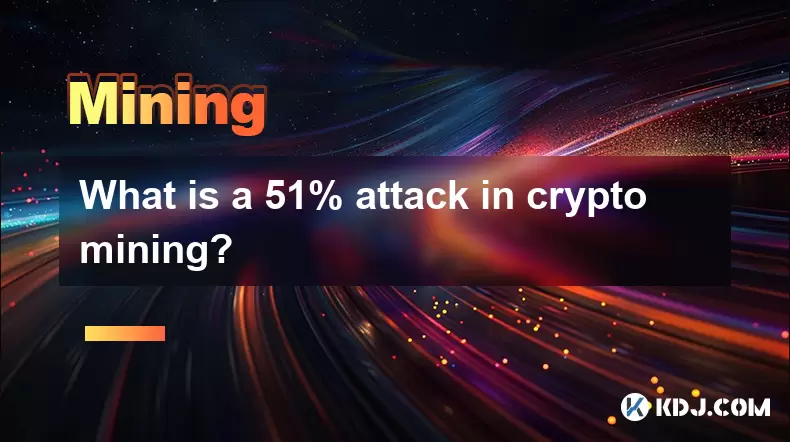-
 Bitcoin
Bitcoin $122,606.5469
4.05% -
 Ethereum
Ethereum $3,030.9726
2.47% -
 XRP
XRP $2.9632
5.89% -
 Tether USDt
Tether USDt $1.0001
-0.02% -
 BNB
BNB $703.7501
1.91% -
 Solana
Solana $166.4981
2.63% -
 USDC
USDC $0.9998
-0.01% -
 Dogecoin
Dogecoin $0.2059
3.75% -
 TRON
TRON $0.3034
0.82% -
 Cardano
Cardano $0.7534
1.69% -
 Hyperliquid
Hyperliquid $48.5519
1.41% -
 Stellar
Stellar $0.4752
7.04% -
 Sui
Sui $3.9140
13.90% -
 Chainlink
Chainlink $16.0052
4.10% -
 Hedera
Hedera $0.2481
7.89% -
 Bitcoin Cash
Bitcoin Cash $517.9548
2.40% -
 Avalanche
Avalanche $21.7177
2.16% -
 UNUS SED LEO
UNUS SED LEO $9.0350
0.04% -
 Shiba Inu
Shiba Inu $0.0...01373
4.00% -
 Toncoin
Toncoin $3.0283
0.75% -
 Litecoin
Litecoin $96.2061
1.75% -
 Polkadot
Polkadot $4.1076
2.82% -
 Monero
Monero $350.3051
3.14% -
 Uniswap
Uniswap $9.2991
9.82% -
 Dai
Dai $0.9998
-0.01% -
 Ethena USDe
Ethena USDe $1.0004
-0.01% -
 Pepe
Pepe $0.0...01260
3.52% -
 Bitget Token
Bitget Token $4.4459
1.08% -
 Aave
Aave $322.7677
6.21% -
 Bittensor
Bittensor $421.8669
8.02%
What is a 51% attack in crypto mining?
A 51% attack occurs when a single entity controls over half the mining power, allowing manipulation of transactions and double-spending.
Jul 13, 2025 at 05:14 am

Understanding the Concept of a 51% Attack
A 51% attack in cryptocurrency refers to a situation where a single entity or group controls more than half of a blockchain network's mining power or hash rate. This level of control enables the attacker to manipulate the network in various ways, undermining the decentralized nature that cryptocurrencies are built upon. In such an event, the malicious actor can potentially double-spend coins, prevent transaction confirmations, and even halt mining activities.
The foundation of blockchain technology lies in its decentralized consensus mechanism, which ensures that no single party has undue influence over the entire system. When one miner or mining pool accumulates more than 50% of the total hash rate, it disrupts this balance. The hash rate is the measure of computational power used in mining and processing transactions on a proof-of-work (PoW) blockchain like Bitcoin or Ethereum Classic.
How Does a 51% Attack Work?
In a normal scenario, each block added to the blockchain must be validated by a majority of nodes through a consensus process. Miners compete to solve complex mathematical puzzles, and the first to do so adds the next block to the chain. However, during a 51% attack, the attacker leverages their superior computing power to outpace honest miners.
Here’s how the manipulation unfolds:
- The attacker secretly mines blocks on a private chain instead of broadcasting them to the network.
- While the rest of the network continues adding blocks to the public chain, the attacker builds a longer alternative chain.
- Once the attacker's chain surpasses the length of the legitimate chain, they broadcast it to the network.
- Due to the rule that the longest chain is accepted as valid, nodes switch to the attacker's chain, effectively erasing recent transactions from the original chain.
This allows the attacker to reverse transactions they previously made, leading to a double-spending scenario where the same coins are spent twice. It also gives them the ability to censor specific transactions or freeze others entirely.
Real-World Examples of 51% Attacks
Several smaller cryptocurrencies have fallen victim to 51% attacks, demonstrating the real-world implications of such vulnerabilities. Notable cases include:
- Ethereum Classic (ETC): In early 2019, ETC suffered multiple 51% attacks, resulting in over $5 million worth of coins being double-spent. The attacker managed to reorganize large sections of the blockchain, causing widespread concern about the security of PoW networks with lower hash rates.
- Bitcoin Gold (BTG): In May 2018 and again in January 2020, BTG was targeted by attackers who exploited its relatively low mining difficulty. Millions of dollars were stolen due to the reversal of transactions.
- Verge (XVG): A series of attacks in 2018 allowed hackers to mine unauthorized blocks and inflate the supply of XVG tokens, severely damaging investor confidence.
These incidents highlight how smaller-cap cryptocurrencies with less distributed mining power are particularly vulnerable to such attacks. Larger networks like Bitcoin remain largely secure due to the immense cost and coordination required to execute a successful 51% attack.
Implications of a 51% Attack on Network Security
When a blockchain suffers a 51% attack, several critical aspects of its security and trustworthiness are compromised:
- Double Spending: As previously mentioned, the most immediate impact is the ability to spend the same coins twice. This undermines the integrity of transactions and erodes user confidence.
- Transaction Censorship: The attacker can selectively exclude or delay certain transactions from being confirmed, giving them control over who can transact on the network.
- Loss of Decentralization: A core principle of blockchain is decentralization. If one entity controls the majority of hashing power, the network becomes centralized, defeating the purpose of using blockchain in the first place.
- Market Volatility: News of a successful attack often leads to panic selling, plummeting prices, and loss of investor trust.
Moreover, repeated attacks on a particular blockchain can lead to long-term damage to its reputation and adoption. Developers may need to implement costly countermeasures, such as switching consensus mechanisms or introducing checkpointing systems to prevent future breaches.
Preventive Measures Against 51% Attacks
To mitigate the risk of 51% attacks, developers and communities have proposed and implemented several strategies:
- Switching to Proof-of-Stake (PoS): Networks like Ethereum have transitioned from PoW to PoS, making 51% attacks significantly more expensive and harder to execute. In PoS, attackers would need to own 51% of the total supply of the cryptocurrency, which is both impractical and self-defeating.
- Merged Mining: Some blockchains allow miners to simultaneously mine on multiple chains using the same hashing power. This increases the overall security of smaller chains by piggybacking on the hash rate of larger ones.
- Checkpointing: Periodically embedding trusted checkpoints into the blockchain can prevent deep reorganizations caused by a malicious chain.
- Decentralized Mining Pools: Encouraging the use of smaller, decentralized mining pools prevents any single entity from gaining excessive control over the network.
Additionally, exchanges and wallet providers can implement additional layers of verification for high-value transactions, ensuring that double-spent coins cannot be withdrawn without proper confirmation.
FAQ – Frequently Asked Questions
Q: Can a 51% attack steal my private keys?
A: No, a 51% attack does not expose private keys or grant access to users' wallets. It only allows the attacker to manipulate the blockchain by reversing transactions or preventing new ones from being confirmed.
Q: Is Bitcoin immune to 51% attacks?
A: While Bitcoin is highly resistant due to its massive hash rate, it is not completely immune. However, the financial and logistical barriers to executing such an attack on Bitcoin make it extremely unlikely.
Q: How can I protect myself from a 51% attack as a user?
A: As a user, you should wait for a sufficient number of confirmations before considering a transaction final. On smaller networks, waiting for six or more confirmations is advisable. Using services that monitor blockchain reorganizations can also help detect suspicious activity.
Q: Are all blockchains vulnerable to 51% attacks?
A: Blockchains that rely on proof-of-work are theoretically vulnerable. However, networks using proof-of-stake, delegated proof-of-stake, or other consensus algorithms are generally less susceptible or require different types of attacks.
Disclaimer:info@kdj.com
The information provided is not trading advice. kdj.com does not assume any responsibility for any investments made based on the information provided in this article. Cryptocurrencies are highly volatile and it is highly recommended that you invest with caution after thorough research!
If you believe that the content used on this website infringes your copyright, please contact us immediately (info@kdj.com) and we will delete it promptly.
- UK Treasury Watch: Bitcoin Surge Lifts Companies Amidst Crypto Optimism
- 2025-07-14 16:30:12
- Satoshi Nakamoto: Bitcoin's Billionaire Mystery – Richest Person?
- 2025-07-14 16:50:12
- Finnovex South Africa 2025: Innovation and Expanding Inclusion in the Digital Finance Era
- 2025-07-14 16:30:12
- Pumpfun's $500M ICO: Memecoin Mania or the Future of Funding?
- 2025-07-14 14:30:12
- Dogecoin, XRP Price, and the Bitcoin Bull Run: What's the Hype?
- 2025-07-14 16:10:12
- Pump.fun's $PUMP Token Sale: A Wild Ride in the Memecoin Frenzy
- 2025-07-14 14:30:12
Related knowledge

How are crypto mining profits taxed?
Jul 14,2025 at 12:28am
Understanding Cryptocurrency Mining and TaxationCryptocurrency mining involves validating transactions on a blockchain network and earning rewards in ...

How to keep a mining rig cool
Jul 12,2025 at 01:42pm
Understanding the Importance of Cooling in Mining RigsCryptocurrency mining is an intensive process that places heavy demand on hardware components, p...

How much does it cost to start crypto mining?
Jul 13,2025 at 12:22am
Understanding the Basic Costs of Crypto MiningStarting crypto mining involves several upfront and ongoing expenses. The primary costs include hardware...

What is the most profitable crypto to mine?
Jul 13,2025 at 07:00am
Understanding Mining Profitability in CryptocurrencyWhen evaluating the most profitable crypto to mine, it's essential to consider several factors tha...

What do I need to start mining crypto?
Jul 13,2025 at 12:28am
Understanding the Basics of Crypto MiningCrypto mining is the process by which transactions are verified and added to a blockchain, and new coins are ...

How does crypto mining work?
Jul 13,2025 at 11:01am
Understanding the Basics of Crypto MiningCrypto mining is the process through which new cryptocurrency coins are introduced into circulation and trans...

How are crypto mining profits taxed?
Jul 14,2025 at 12:28am
Understanding Cryptocurrency Mining and TaxationCryptocurrency mining involves validating transactions on a blockchain network and earning rewards in ...

How to keep a mining rig cool
Jul 12,2025 at 01:42pm
Understanding the Importance of Cooling in Mining RigsCryptocurrency mining is an intensive process that places heavy demand on hardware components, p...

How much does it cost to start crypto mining?
Jul 13,2025 at 12:22am
Understanding the Basic Costs of Crypto MiningStarting crypto mining involves several upfront and ongoing expenses. The primary costs include hardware...

What is the most profitable crypto to mine?
Jul 13,2025 at 07:00am
Understanding Mining Profitability in CryptocurrencyWhen evaluating the most profitable crypto to mine, it's essential to consider several factors tha...

What do I need to start mining crypto?
Jul 13,2025 at 12:28am
Understanding the Basics of Crypto MiningCrypto mining is the process by which transactions are verified and added to a blockchain, and new coins are ...

How does crypto mining work?
Jul 13,2025 at 11:01am
Understanding the Basics of Crypto MiningCrypto mining is the process through which new cryptocurrency coins are introduced into circulation and trans...
See all articles

























































































